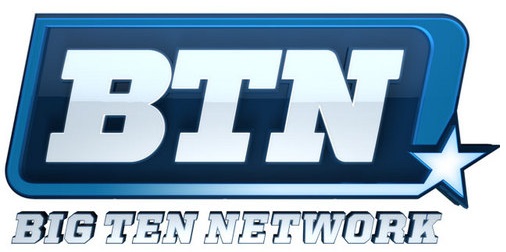When the Big Ten added Rutgers and Maryland, the college sports world scratched their collective heads. Here were two schools that had little to no previous connection to the conference, a mediocre athletic resume (especially where it counts in football), and a distant geographic relationship with the other Big Ten schools.
The truth of the matter is that the move to add Rutgers and Maryland was not about becoming more of a force in conference power rankings or impressing pollsters and analysts. This was all about expanding the Big Ten’s “geographic footprint” to the east coast. While that phrase “geographic footprint” has become the lead figure on the Mount Rushmore of college realignment phraseology, it’s really all about one thing. Money. As is everything else involved in the NCAA. It’s not about anything on the field or increasingly empty buzzwords like “tradition.” And it sure isn’t about the “student-athletes.”
And in this case, the Big Ten’s money would come from getting Big Ten Network on cable providers in New York City and elsewhere along the east coast. Step one of that process towards printing their own money has already been completed well before the beginning of the 2014-2015 season.
BTN has gained clearance on Time Warner Cable and Cablevision in New York and New Jersey. Here’s more from NJ.com:
Mark Silverman, president of the Big Ten Network, confirmed Monday that the network had reached deals with Time Warner Cable and Cablevision to broadly distribute its channel to the millions of homes in the market. Terms of the deal were not disclosed.
Silverman also said he is optimistic that a deal will be reached with the third cable giant — Comcast — before the football season.
The news will be welcomed by Rutgers fans, as it avoids the prospects of not having the Scarlet Knights’ games in their new conference available on their cable systems. Rutgers’ first two Big Ten games — its opener against Penn State and then against Michigan — are slated for primetime on the Big Ten Network.
“It is our number one priority this year to integrate Rutgers and Maryland into the Big Ten Network and make high-quality programming for both schools,” Silverman told The Star-Ledger.
Of course the top priority for the conference is to integrate Rutgers and Maryland into BTN, because that is the pathway to gaining carriage and making money. Do you really think it’s a happy coincidence that two primetime Rutgers games against marquis schools like Michigan and Penn State are scheduled for BTN just when it happens to be negotiating to gain carriage in New York and New Jersey?
Let’s do a little quick “back of the napkin math” on this massive victory for BTN. At last check, the channel charges a $1.00 fee per subscriber per month for those customers within the conference footprint, which NY/NJ now falls into thanks to Rutgers. Much like the “Is Andy Murray British or Scottish debate,” New Jersey gets to be a part of the NYC metropolitan area seemingly only when it’s convenient to someone looking to make money.
Cablevision has 3.1 million subscribers in the area. Time Warner has a little more than 2.6 million subscribers in New York state, many of them concentrated in the city. New Jersey has a fraction of that at just over 40,000. Let’s just be extra conservative and put the total number of subscribers that will now get BTN at 4 million.
Just from this deal alone, the Big Ten just pocketed an extra $48 million per year.
Forty. Eight. Million. Dollars. Per. Year.
And that’s just from one carriage agreement in New York City. Let’s not forget Baltimore, Philadelphia, Washington DC, and the rest of the I-95 corridor that BTN will look to expand into. Back in 2012, Sports Illustrated prophetically estimated that the Big Ten could make $200 million annually from television money on the east coast. And that number may now be on the low end of the spectrum.
Television money is the surest way for building a business and/or sporting empire in 2014 and the bounty of subscriber fees is at its core. The amazing thing about it all is that these leagues don’t even need fans to watch the channel to fill their bank accounts. BTN may draw a .00001 rating in NYC for Nebraska vs Ohio State baseball, and it still wouldn’t matter. As long as the network and the conference is getting their one George Washington per subscriber per month Jim Delany can add an extra zipcode onto his house.
Cable and satellite fees are one of the central reasons why ESPN has become a company worth tens of billions of dollars and now other entities are finally figuring out the secret. Although no network will be able to come close to reaching ESPN’s $5+ subscriber fees anytime soon, what BTN can make from this deal alone is a huge financial windfall for the league.
Rutgers and Maryland may never win any New Year’s Day bowl games for the Big Ten, but that doesn’t matter. It never did and never will. Rutgers and Maryland are in the Big Ten so everyone involved with the Big Ten can make an obscene amount of money. Well, everyone but the athletes of course.
[NJ.com]








Comments are closed.